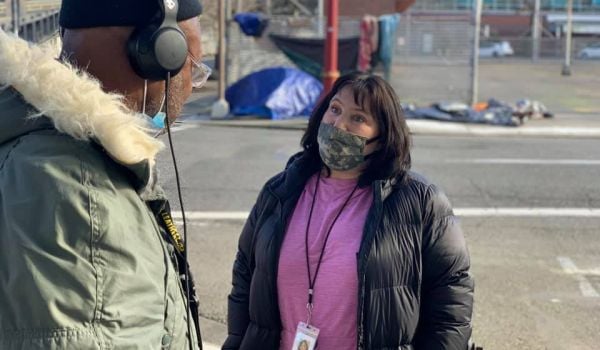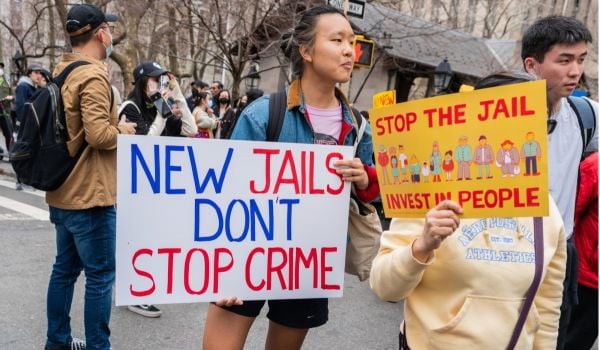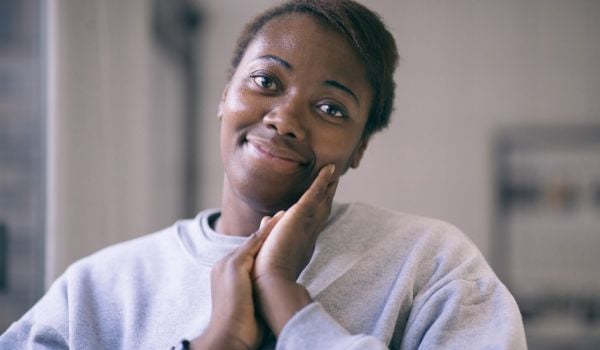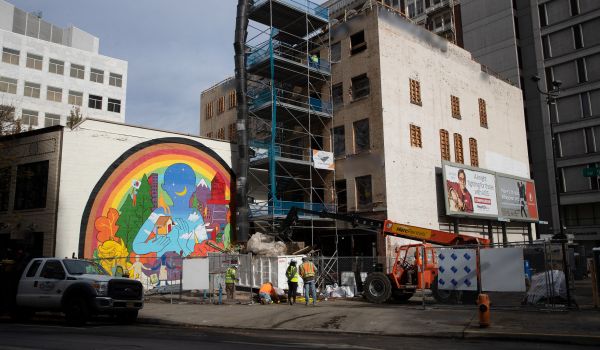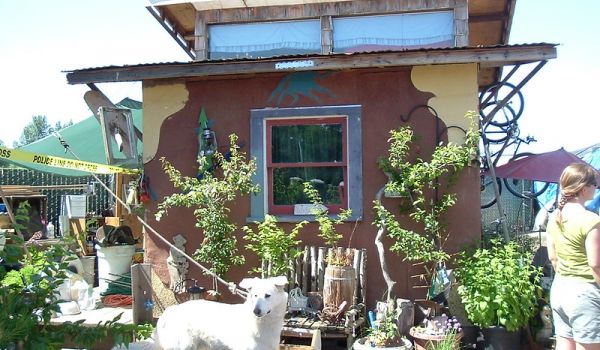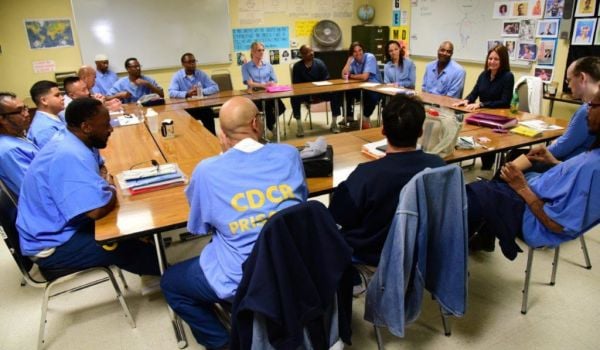“‘Your body is locked up, but your mind don’t have to be.’ She was saying little stuff like that, and I would get so angry with her,” says O’Nesha Cochran about Diane Wade, the probation and parole officer who worked with Cochran while she was in prison. Wade died suddenly in 2010, after 11 years with Multnomah County’s Department of Community Justice in Oregon. “I got to believe that she believed that I could change,” Cochran says. “I didn’t believe that I could change, but she believed that I could change. And so that lives on in me,” Cochran says.
Cochran has taken on a role similar to the one Wade performed for her. “They don’t have a lot of self-esteem. They don’t believe they can change, but I believe they can change,” she says of the justice-involved African-American women she meets through her work. Cochran is a key figure at the Diane Wade House, which opened in February in Gresham, Oregon. (Gresham is about 30 miles east of Portland.) The dormitory-style transitional housing program, run by Portland-headquartered nonprofit Bridges to Change, is designed to repair some of the harm the criminal justice system historically has inflicted on communities of color.
Multnomah County is one of many places in the United States where people of color are disproportionately incarcerated. Roughly two decades ago, however, the county began to address the disparity, along with other criminal justice issues, and decreased its jail population by 42 percent. This while the local population increased by 17 percent. Strategies included jail diversion programs and increasing support to populations overrepresented in the county jail system.
Abbey Stamp, executive director of the county’s Local Public Safety Coordinating Council (LPSCC), says that in 2015, Multnomah County undertook a comprehensive analysis of racial disparities across the criminal justice system and looked at what jail was being used for and what populations were being jailed. More than 40 percent of those in the county jail system report having a mental health issue. While African-Americans represent only 6 percent of Multnomah County’s overall population, in 2016 they accounted for 29 percent of those in jail. Nearly 80 percent of Multnomah County’s population identifies as white, according to the most recent census data.
Stamp says the research showed “justice-involved, African-American women lacked culturally specific, transitional housing services.” So, equipped with funding from the MacArthur Foundation’s Safety and Justice Challenge, Multnomah County designed a program based on its existing data and a successful local program serving men.
For Stamp, the effort is about repairing some of the harm done by the dominant, white power structure. “It is incumbent on justice leadership to say that the justice system has harmed communities of color, and this is an intentional attempt to actually start to acknowledge that harm and provide an alternative specifically to help African-American women leave the justice system and get on to stable lives,” Stamp says.
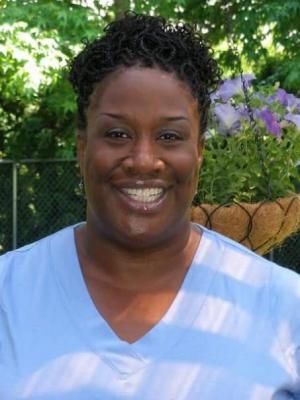
Diane Wade
Staff tell the women in the house, Cochran says, that “you can’t self-medicate with street drugs to run away from pain and trauma. We’re going to face these emotions, and emotions aren’t going to kill you.” She says that their ability to empathize and to speak from personal experience means that the clients in the house are able to hear them more easily.
Some of the insights that helped shape the house and its programming came from a focus group that Cochran facilitated when she was interning with the county. Cochran and her staff members talk with their clients about issues specific to the black community. These range from conversations about what messages the women receive from the media and society at large about black women, to what they know about African culture that predates enslavement.
“How do we get along with each other? How do we treat each other? Are black women good to each other? What does the interpersonal look like within the black community?” These are some questions Cochran says the women are able to freely discuss in the house without worrying about hurting others’ feelings.
The program is intended to help women participate fully in society. As a result, clients work on skills necessary for recovery, life management and searching for a job. Much of the programming at the house focuses on recovery from substance abuse, and Cochran says she noticed that one queer resident without substance abuse issues seemed bored. Suspecting that she needed another way to engage, Cochran brought the resident to a community meeting about violence against trans people. That meeting, Cochran says, helped the resident find a new way to engage with the world.
Stamp says that the county is working with the MacArthur Foundation on measuring outcomes and has connected with the National Center for Victims of Crimes to do a qualitative analysis of the program as well. Some of the measures include the ways people are accessing the Diane Wade House, the services they use while there and the length of time they stay. Multnomah had the benefit of foundation support, but Stamp says that if a community has funding and is willing to take chances, the initiative can be replicated. “I would encourage other communities to look at their data, take a hard look in the mirror and do something to repair the harm that has been done in the past,” Stamp says.
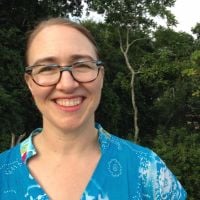
Zoe Sullivan is a multimedia journalist and visual artist with experience on the U.S. Gulf Coast, Argentina, Brazil, and Kenya. Her radio work has appeared on outlets such as BBC, Marketplace, Radio France International, Free Speech Radio News and DW. Her writing has appeared on outlets such as The Guardian, Al Jazeera America and The Crisis.
Follow Zoe .(JavaScript must be enabled to view this email address)


